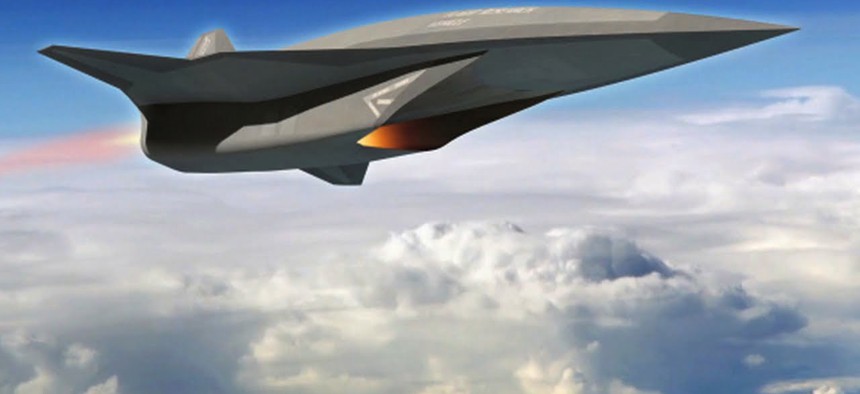
Air Force plans recoverable hypersonic drones by 2040
With emerging hypersonic “boost” technology, the Air Force envisions hypersonic weapons to be followed by hypersonic drones for ISR.
Air Force weapons developers expect to operate hypersonic intelligence, reconnaissance and surveillance drones by the 2040s, once scientific progress with autonomy and propulsion technology matures to a new level.
The advent of using a recoverable drone platform able to travel at high altitudes, faster than Mach 5, will follow the emergence of hypersonic weapons likely to be operational in the mid-2020s, according to the Air Force Chief Scientist Geoffrey Zacharias.
Describing the trajectory of hypersonic technology in terms of “stair steps,” Zacharias said incremental progress will require decades of continued technological development.
While unmanned hypersonic surveillance flight is on track for the 2030s, launching recoverable hypersonic drones is not expected be possible until the 2040s, Zacharias said.
Since hypersonic vehicles can travel in a parabola-type flight path, they rise very high up into the atmosphere to reach hypersonic speeds before returning to lower altitudes.
Developing recoverable drones is much more challenging given the level of autonomy and re-entry needed for hypersonic vehicles to descend and perform ISR missions.
“A booster sends it into the atmosphere and then it dives down to its target,” Zacharias said. “A re-entry vehicle would need to be maneuverable with sufficient wing area so it can avoid counter-missiles. We need to design that chamber and make it stable to allow for maneuver.”
The advantages of hypersonic ISR drone flight are multi-faceted.
“You could fuel one of these to go for 1,000 miles in ten minutes. It speeds up the kill chain,” he said.
Hypersonic drones could quickly reach long-range targets to perform a variety of missions such as testing enemy air defenses, surveillance missions and even precision strike operations. These drones could identify far away targets much faster while ensuring that manned aircraft remain at a safe distance.
While today's cruise missiles travel at speeds up to 600 miles per hour, hypersonic weapons will be able to reach speeds of Mach 5 to Mach 10, Air Force officials said.
A weapon traveling at hypersonic speeds, naturally, would better enable offensive missile strikes to destroy targets such as enemy ships, buildings, air defenses and even drones and fixed-wing or rotary aircraft depending upon the guidance technology available.
Last year, the Air Force launched several hypersonic speed “test flights” as part of a joint program with Australia.
Some of the remaining scientific challenges to sustaining hypersonic drone flight include developing an ability for vehicles to operate at very high temperatures, Zacharias said.
In order to develop operational hypersonic weapons and drones, the mechanics and technology of hypersonic flight first need to be refined and clearly established.
With this in mind, Air Force senior officials have said the service wants to build upon the successful hypersonic flight test of the X-51 Waverider 60,000 feet above the Pacific Ocean in May of 2013.
The X-51 was a proof of concept test designed to demonstrate that a scram jet engine could launch off an aircraft and go hypersonic.
The scramjet was able to go more than Mach 5 until it ran out of fuel. It was a very successful test of an airborne hypersonic weapons system, Air Force officials said.
The successful test was particularly welcome news for Air Force developers because the X-51 Waverider had previously failed some tests.
The 2013 test flight, which wound up being the longest air-breathing hypersonic flight ever, wrapped up a $300 million technology demonstration program beginning in 2004, Air Force officials said.
A B-52H Stratofortress carried the X-51A on its wing before it was released at 50,000 feet and accelerated up to Mach 4.8 in 26 seconds. As the scramjet climbed to 60,000 feet it accelerated to Mach 5.1.
The X-51 was also able to send back data before crashing into the ocean -- the kind of information now being used by scientists to engineer a more complete hypersonic vehicle.
Hypersonic flight requires technology designed with materials that can operate at the very high temperatures created by hypersonic speeds. They need guidance systems able to function as those speeds as well, Air Force officials said.